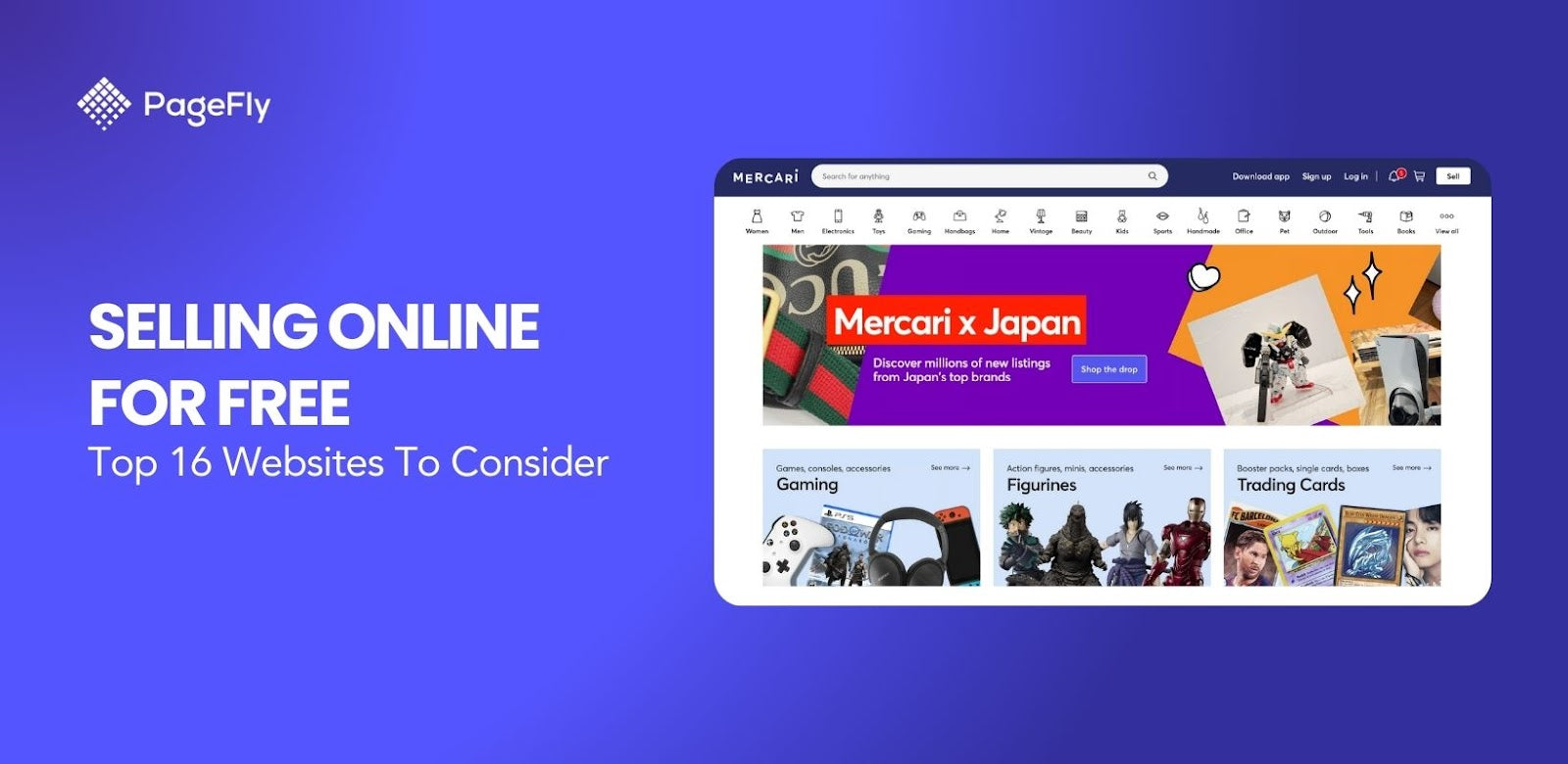We all know that a return policy is an essential component that helps customers believe in a business. Beyond a customer-friendly policy, its purpose is to protect shoppers’ rights when they’re not satisfied with products. However, some people exploit this provision, using a tactic known as return fraud, to unlawfully reclaim their money.
In many recent years, especially when E-commerce is developing strongly, return fraud has become one of the biggest losses for most retailers. This is precisely why every merchant needs to have a thorough understanding of fraudulent returns and implement effective methods to safeguard their businesses.
So, don’t miss out on any part of this article because we will share with you the most basic information and effective ways to detect and prevent unauthorized returns.
Outline
- I- Definition Of Return Fraud
- II- Costs of Return Fraud
- III- Types of Return Fraud
- IV- Effective Tips To Prevent Return Fraud
- Conclusion
I- Definition Of Return Fraud
What Is Return Fraud?
Return fraud is known as the act of defrauding a retail store through the return process. In reality, criminals can conduct this illegal action in many different ways. For example, the offender can request cash back for the items they’ve already used or send retailers an empty box.
What Is The Difference Between Return And Refund Fraud?
Return fraud happens when shoppers send back their purchased products and require to get money back. Meanwhile, refund fraud is about getting refunds without returning goods, and they can even make false claims about products. Both of these illegal actions damage and make merchants lose revenue considerably.
Despite the detailed difference, they still share the same points which often come from fraudsters or dishonest customers. So, by having a good understanding of return fraud and how to prevent return fraud, merchants can also have an overview and solutions for refund fraud, as well.
II- Costs of Return Fraud
As Statista's report “Types of fraud causing the most losses to e-commerce merchants in the United States in 2022”, dishonest requests for return cover about 13% of their losses.
Moreover, in the 2022 Consumer Returns in the Retail Industry Report by the National Retail Federation, for every $1 billion in sales, the average retailer incurs $165 million in merchandise returns. And for every $100 in returned merchandise accepted, retailers lose $10.40 to return fraud. Specifically with online sales, fraudulent returns cover an average of 10.7% of online returns.

Image Credits: From National Retail Federation Report
As you can see, return fraud has serious impacts on every merchant, and your store cannot be an exception. So, if merchants don’t have suitable ways to prevent illegal returns soon, their businesses can suffer serious damage.
III- Types of Return Fraud
In reality, fraudsters have many ways to conduct their return fraud schemes. Here are the 10 most common types of return fraud, which exist on a wide spectrum, ranging from genuine shoppers to those who even have never bought any item from your store. Let's take a look at these popular kinds and consider which case your retail business can meet.
1. Bricking
Bricking is a type of return fraud where a real customer buys a product, then removes components from the product, making the item unusable. This case often occurs with electronic products.
For example, one shopper bought a computer from your store, then he dismantled it and resold some of its valuables. Finally, he gives the item back and requests a refund for this item.
2. Cross-retailer Return
If your business rival sells the same product at a lower price, be careful with cross-retailer returns. In this situation, your customer can buy a product from the competitor and return it to your store, then request a higher cash refund, store credit, or more expensive item.
3. Employee Fraud
Choosing a loyal and reliable employee is never easy for any merchant. In some cases, an employee can become the main reason for return fraud in your business. They can cooperate with fraudsters and help them complete the refund process at full price even when they know the receipt is fake or the product is stolen.
4. Open-box Fraud
Open-box policy is one way to help businesses eliminate the loss from receiving returned products. Instead of getting rid of these items, merchants can resell them at lower prices.
However, some customers can take advantage of this policy to conduct open-box fraud. For example, a shopper can purchase an expensive product from your store, then send back the item with a refund request. After that, the customer comes back and buys it at a lower price by using the open-box policy.
5. Price Arbitrage
Price arbitrage happens when customers purchase two similar-looking items at different prices in your store. In particular, a consumer buys an expensive product and another that is cheaper but looks similar. After that, he requests to receive a refund for the higher item but just sends back the cheaper one.
6. Price Switching
This dishonest return can occur when shoppers buy two products at different prices from your store, then exchange their price tags. After that, they come back and offer a refund request for the more expensive item, although they just gave you the product at a lower price.
7. Receipt Fraud
Receipt fraud means that customers use their old, stolen, or even falsified receipts to return products and gain a refund. In reality, a deceiver can even make a copy of your store’s receipts to pretend that they purchased products from you and ask for their money back.

8. Returning Stolen Items
This situation occurs when a customer shoplifts a product from your store, then returns to request a refund for this stolen item at full price, including sales tax.
9. Switch Fraud
Differently from bricking, switch fraud happens when a shopper purchases one item from your store and returns a used item that they bought before. Then, they ask for full money back for the old product. However, under certain conditions, they can be damaged or defective.
10. Wardrobing
Wardrobing is also known as return fraud, in which an item is purchased, used, and then returned for a refund. It is a kind of customer-friendly purchasing merchandise for short-term use.
The action is a common term in the fashion industry, especially with high-end clothing. When someone just needs to wear the expensive item only for one important occasion, then they return the item to the store for a refund. Wedding dresses are a typical example of wardrobing services.

11. Empty Box Fraud
The last one often occurs in the E-commerce industry, where almost online shops use local delivery services. A dishonest customer can pretend he receives an empty box that doesn't contain their product. After that, he calls your store to ask for a refund, although he privately keeps the real item. In this case, it's even difficult for merchants to check whether the customer deceives or the package is lost.
IV- Effective Tips To Prevent Return Fraud
1. Optimize Your Return Policy
A return and refund policy is a necessary feature that helps a shop attract and build trust with customers. That’s why, to ensure keeping such friendly policies and preventing return fraud, the first and most important step is optimizing your return policy.
Although cheaters can still exploit loopholes in the policy to commit return fraud, a clear policy with strict rules can considerably prevent the damage. You can follow the basic steps and apply them flexibly to make a fine-tuned policy that is suitable for your products and business models.
What Products Can Be Returned
You need to identify what kind of products can be returned, what products can be exchanged, and in what condition products can be returned.
Besides, with on-sale products, you also need to decide whether they are returnable or not. Or, with some stores, merchants need to classify whether customers can send back products when they open the packages or tags are missing.
Especially if your store has one specific channel for sale items, it’s important to set its explicit return policy.
Amazon is a typical example of creating clear and concise return policies. They improve and update specific policies for different types of products.

When Products Can Be Returned
It’s better if you can set a time limit for returned orders. If your return time rank is too long, your store may receive items of lower quality.
With some online merchandise, the products can be changed after a maximum of 90 days. However, you can adjust the time to be suitable for your store and specific products.
Moreover, in case you don’t want to make your customers happy with a refund, you can set different time limits for various refund cases. In some stores, if shoppers send products after a maximum of 15 days, you can send them full cash back. But after 15 days, you’ll offer store gift cards or exchanges instead of cash refunds.
Or merchants can utilize this policy as a useful method to satisfy loyal customers and help them to gain more benefits. For example, Best Buy provides an extra time duration of return policy for their plus members:

How Fee Can Be Calculated
Additionally, retailers should indicate what kind of payment they or their customers need to make when returning products. Based on your products and store, you should think carefully and give details information like who will pay for return shipping and restocking fees.
Especially with online orders, merchants should have clear-cut guidelines for shipping fees and the process of returning items. It’s common for many businesses to require customers to pay shipping fees.
For instance, Best Buy provides detailed information on restocking fees when customers request a return.

How Long Customers Receive Refunds
It’s also important to inform your shoppers of the time they need to wait to get their refund. In some specific circumstances, based on product types, or location, the answers for customers can be different. For example, with international orders, they have to wait longer to receive cash back.
For example, Shopee provides meticulous refund timelines for each type of customers' payment method.

In case you use Shopify POS for your business, don't miss out on this useful video because it can help you understand how to process returns & refunds.
POS: How to process returns & refunds || Shopify Help Center
2. Convey Return Policy To Customers
The policy you make will be meaningless if your customers don't have access to it. That's why you should make sure that almost all your shoppers are aware of and understand your return policy. Don't forget to clearly publish it on your website. Additionally, you can add it as a section during the checkout process to remind them.
In particular, Nike has a return policy page, which is also included as a section in the website’s footer. However, when customers visit the Nike website and go to the checkout page, they may encounter some rules of return and refund in the “Terms of Sale" section on this page. This is one way to show that Nike is trying their best to make sure customers know about their policy.
3. Check Customers' Historical Data
Retailers should be careful with frequent returners who often send back your store's products and request refunds. In some situations, they may be honest but unlucky shoppers who cannot find suitable items. However, it's necessary to check them carefully because they could be tricksters.
4. Require IDs For Returns
It is necessary to require customers to bring their identification when they come to your store and return a product. Some forms of identification you can require are receipts, a photographic ID, and a payment card. For instance, thanks to the photographic ID, you can confirm whether the customer’s name matches exactly with their receipts or not.
5. Eliminate Cash Refunds
A cash refund is always an attractive offer, especially with swindlers; they can take advantage of this policy. By limiting cash refunds and providing other refund options, you can turn return fraud into an opportunity.
Instead of giving cash for any returned item, you can make your customers happy by offering them alternative forms of refund, such as gift cards or exchanging the item for one of equal value.
It's obvious that exchanging products is less damaging than refunding the order at the full price. One of the most popular ways to encourage customers to choose an exchange is by offering free return shipping.
6. Use Fraud Prevention Software
Nowadays, it’s not quite difficult for merchants to detect and prevent fraud returns, thanks to excellent fraud protection software. Particularly for large businesses, this software can eliminate the damage.
Fraud detection software can help retailers find and prevent fraudulent activities by analyzing and improving data based on the information of orders and users. After they detect return fraud, merchants can identify which orders are good and which orders get red flags.
If you want to find suitable software for your store, let’s take a look at the top 3 Fraud Detection Software based on G2’s ranking:
SEON is known as the new fraud prevention tool that identifies risky behavior. The software can create valuable data based on users' email, IP address, phone number, and location. Besides, it can utilize device fingerprinting, machine learning, and predictive scoring.
In addition, SEON provides Know Your Customer (KYC) and Anti-Money Laundering (AML) checks using the customer's first name, middle name, last name, and date of birth across 40 global politically exposed persons, sanctions, and watchlists.
With 10 years in the business, Eye4Fraud is confident to bring merchants a simple process to detect return fraud and good orders.
By combining machine learning with human intelligence, NoFraud analyzes thousands of data points to provide you with the most accurate results. Based on historical, behavioral, and order information, they will derive a simple actionable result: Pass or Fail. After that, merchants can easily identify which order they will accept or reject.
7. Train Employees To Spot Fraud
This is the final but also necessary step that no merchant should ignore. Using software cannot be effective if you don’t choose and train your employees carefully. During the training process, you need to help staff know the signs of return fraud, like struggling to give personal information or buying expensive items without asking any questions about products.
Conclusion
Return policy is always an essential part of any retail business. That's why, to keep your customers happy and maintain the store's profit, having a clear and coherent return policy is necessary for all merchandisers. Any merchant should thoroughly learn about what return and return fraud are, what kind of return fraud exists, and how to eliminate the damage. I hope that the article can help merchants gain a general view of return fraud in business.
In reality, each store has its own unique product types and special features. Therefore, it's better for retailers to understand these terms and find out which method is the most effective and suitable to prevent fraudulent returns in their organizations. Although this experiment of applying fraud detection can encounter difficulties, it's worth it and better than losing too much money due to fraudulent returns.












![14 Profitable Small Food Business Ideas for 2025 [Real Numbers]](http://pagefly.io/cdn/shop/articles/1_58b587d2-13db-4aa6-8c19-e40f5c88d3eb.jpg?v=1758255771&width=4460)
![Art Business Names: 350+ Ideas + Free Generator [2025 Updated]](http://pagefly.io/cdn/shop/articles/art_business_name_e94a54e9-d325-4ba3-94ab-7b4297952312.png?v=1760062968&width=1640)







